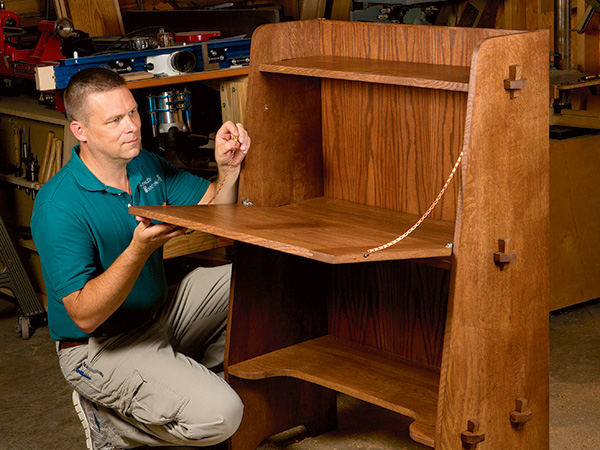
As many years as I’ve been woodworking, there are now several nice heirlooms furnishing my home.
Yet as often as guests admire and compliment these pieces of furniture, every time I walk past them, all I seem to see are the flaws.
It used to bother me a great deal. I made things that others, mostly non-woodworkers, seemed to think were very nice, but I knew better. I knew where all the mistakes were, where all the compromises lay hidden, where my craft fell short of my vision.
 This striving for perfection is good, in moderation. It compels us to take the extra time to check the measurements, forces us to insure that the joints are tight, and makes us apply that extra layer or two of finish so we get the most from our efforts. But taken to extremes, it can ruin what should be a relaxing and fulfilling hobby.
This striving for perfection is good, in moderation. It compels us to take the extra time to check the measurements, forces us to insure that the joints are tight, and makes us apply that extra layer or two of finish so we get the most from our efforts. But taken to extremes, it can ruin what should be a relaxing and fulfilling hobby.
As my woodworking progressed, I began to have opportunities to examine many fine antique furniture pieces. I began to see a line of imperfectly spaced handcut dovetails on a drawer. I noticed layout lines almost hidden on a table leg to mark a mortise. Handplane and saw marks on the hidden behind a bead detail told the tale of how the parts were shaped, and the attractive “dutchmen” holding the table top together were strategically placed to hide the knot exposed during final planing. These master craftsmen, who I was trying to emulate in my own work, made mistakes, too! They, just like I, often had to settle for “Good Enough” or get no work done at all. The true value of their work lay not in perfection, but in graceful form and long-wearing utility.
Fortunately, as I’ve aged, I’ve mellowed quite a lot. Oh, I still see all the flaws in my work, but I can accept them now more as signatures of my hands rather than blemishes. I still strive for perfection, but accept my human limits.






